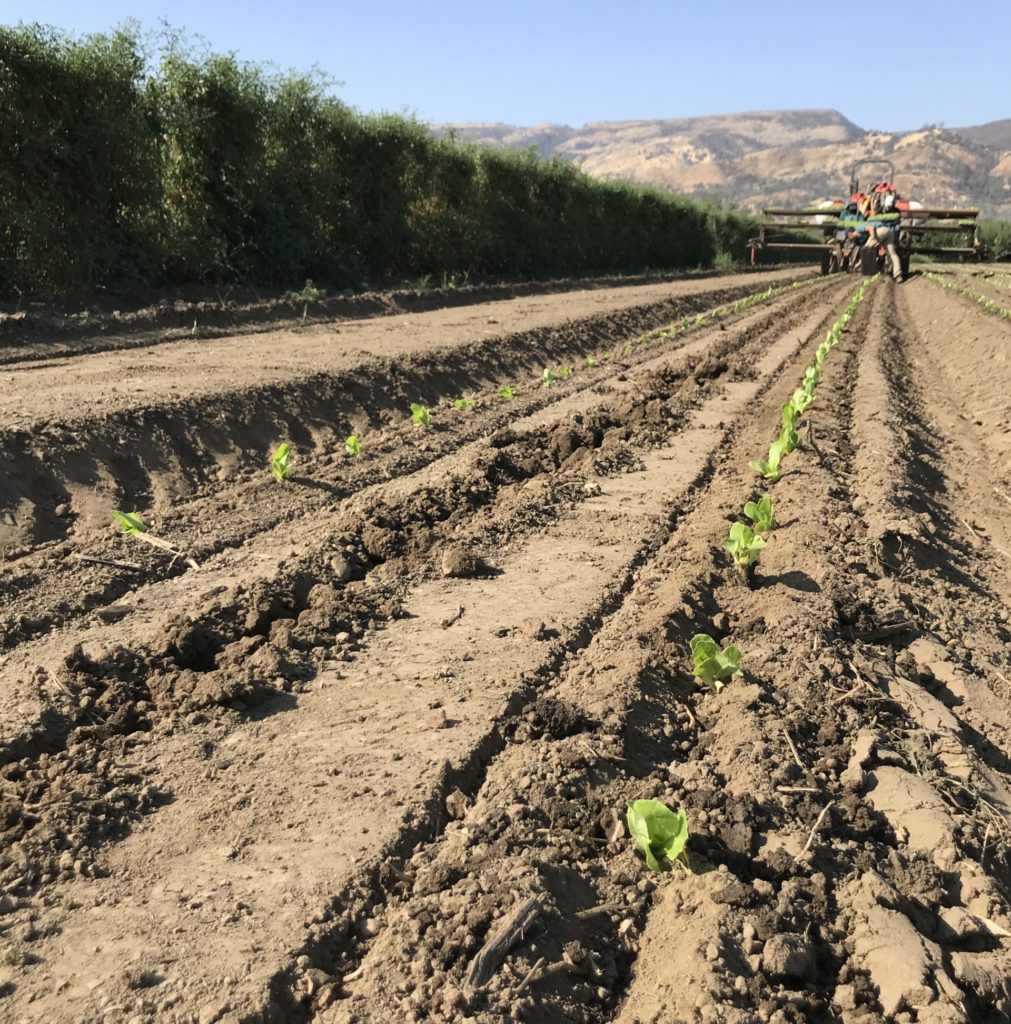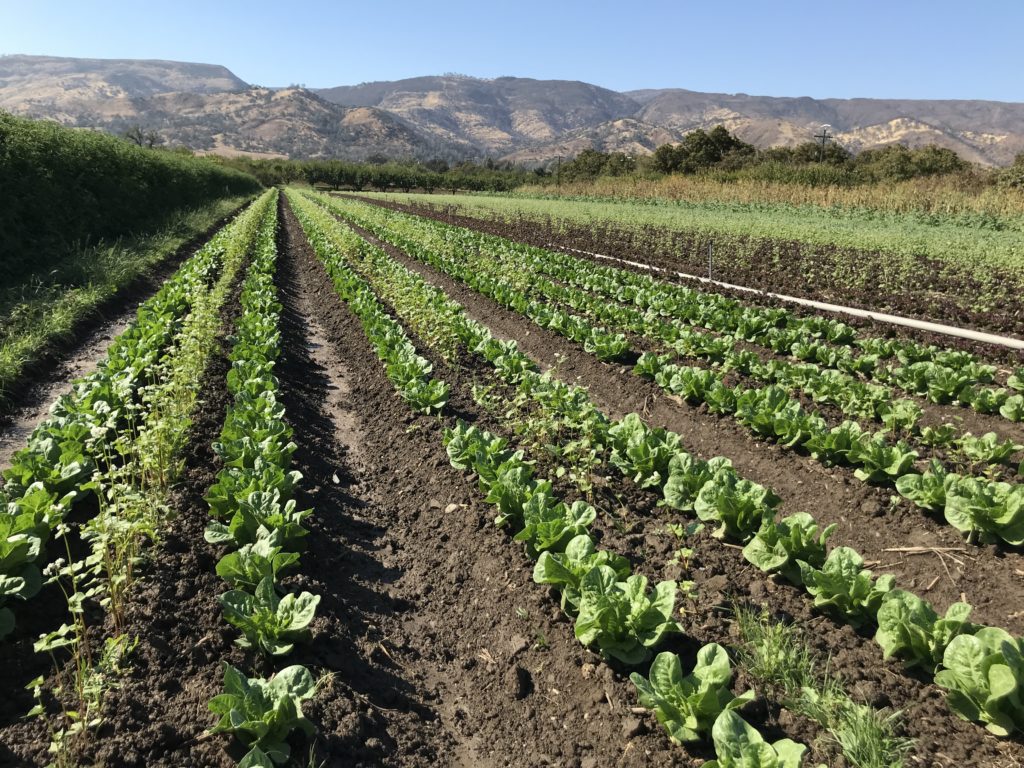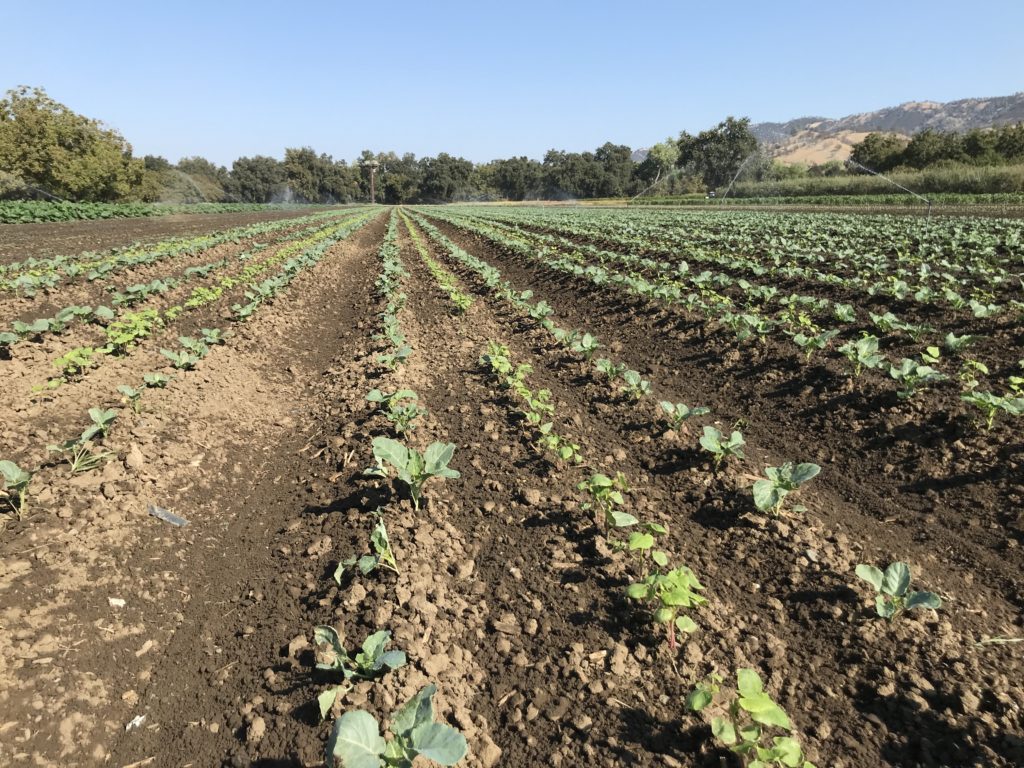It is remarkable to see just how fast the fall crops are growing. Just check out the difference between September 15 and October 15, documented in the photos below. It seems like a new fall crop, root or leafy green, is added to the harvest list each day.




When talking to Andrew about this time of year and how exciting all the new things are, he pointed out that “we wouldn’t have much to harvest right now if we followed common sense.” Common sense would say not to plant “cool weather” crops like lettuce and broccoli in the hottest part of summer (August and September), but that’s what we do every year. In response to this year’s September heat wave, we delayed transplanting and direct seeding, and waited a week until it was “only” in the low 100s, because that’s what we have to do to have vegetables to harvest in fall. The seeds and transplants already in the ground largely did fine, thanks to a lot of care and hard work from our irrigation team, led by Arturo, and the good work when doing the initial transplanting, often led by Alfredo.
We do pay attention to, and respond to, the elements when figuring out what to plant and when, but we also have to follow a calendar fairly rigidly to have the crop mix that we want weeks, or even months, out into the future. During the summer, it’s a matter of picking between a day that’s hot or one that’s really hot. Right now, it’s still dry and relatively warm and we can still harvest a little bit from the summer staples (tomatoes, summer squash, eggplant, and peppers). The plants won’t die until we have a frost, but they slow down with each passing day and there are barely any tomatoes. Day length is decreasing, and just as important, the intensity of light is decreasing too. Plants have been growing really fast over the past month but this is going to slow down, and when we’re about ready to go on our winter break, growth will have slowed to a glacial pace, regardless of the temperature.
The radishes in your boxes the past two weeks were planted in September and went from seed to harvest in about 23 days, exactly as advertised on the bag of seed. A radish seed planted today will take much longer before it’s ready to harvest. For slower root crops, like carrots and beets, which seed companies will say take around 70-75 days, they might take 50 days if planted in August, 65 if planted today in October, and 90 in November. So getting a regular flow of carrots from fall through late spring isn’t quite as simple as planting an additional row or two every week; the slowing growth rate over time also comes into effect. All of this comes into play when thinking about succession planting. It’s the fancy term for doing multiple plantings of the same thing to have a continuous supply (see the photo below – you can see the older plants off to the right).
When planting fall crops in summer, we ignore the hot weather and just keep planting. In winter, ignoring the weather is more difficult to do. Rain, which we want and need, makes it impossible to get into the field and plant. Even after the rain has stopped, it can take a while for the fields to dry out and we don’t want to disturb wet ground, one of the “cardinal sins” of farming, because it can irreparably harm the soil. So we watch the weather forecast constantly and frequently check the soil until conditions are dry enough to plant. But the farm is a business, and we need to grow and harvest produce to stay afloat so occasionally we’ve planted under damper-than-ideal conditions. Ideally, we get a window of perfect planting weather and we get as much as possible in the ground before it starts to rain again. In some years, missing one of those windows to plant could mean having to wait two months before being able to make it into the field again. While that’s not ideal, neither is a drought so we’d welcome one of those damp winters after the lack of rain over the past two years.
– Elaine Swiedler, CSA Manager
